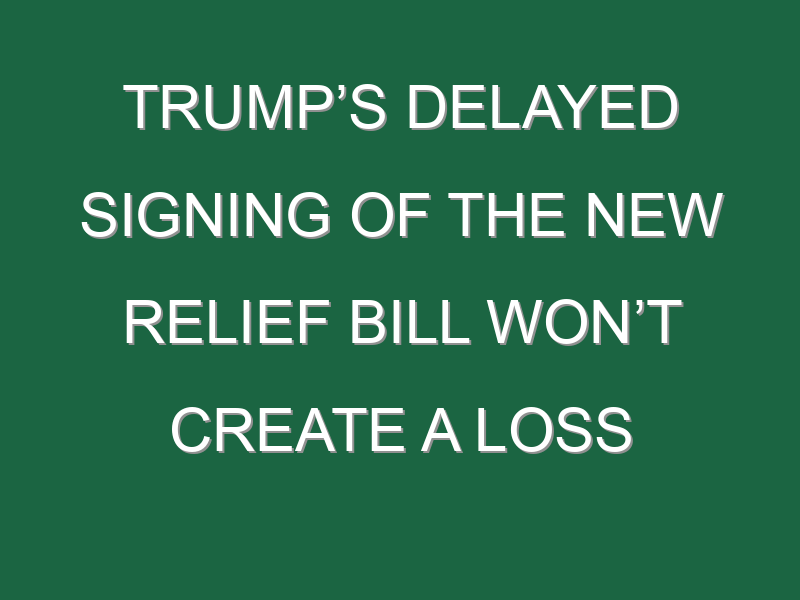A $900 billion stimulus bill passed into law on Sunday will, along with other programs, provide extended and enhanced unemployment benefits to millions of Americans. But leading up to the bill’s passage, state agencies and labor experts believed that President Donald Trump’s delay in signing the bill would create a one-week gap in benefits for many recipients.
Now, the U.S. Labor Department and several states have indicated that there should be no gap in those benefits. The Labor Department said that it “does not anticipate that eligible claimants will miss a week of benefits due to the timing of the law’s enactment” in a statement to CNBC.
So far Rhode Island, New Jersey, Connecticut, Massachusetts, California, and Washington state have said there will be no gap week for their unemployment recipients. More states are expected to make the same confirmation. Those payments may still arrive late because of the time needed to update state systems, but late payments will include retroactive payments for prior weeks.
This will be particularly good news for the millions of Americans receiving unemployment benefits under the emergency Pandemic Unemployment Assistance (PUA) and Pandemic Emergency Unemployment Compensation (PEUC) programs, both first implemented by the March CARES Act. The PUA program targets freelance or gig workers who do not normally qualify for unemployment, yet for much of the pandemic-driven recession it has served nearly as many Americans as traditional unemployment insurance. The PEUC program provides an additional 13 weeks of benefits to recipients who exhausted their state’s time limit for receiving unemployment.
Policy experts had warned that, by approving the new relief package after December 26, Trump would create a ‘gap week’ for recipients of PUA and PEUC because states could not pay benefits for weeks that began after the bill was signed. It’s not currently clear what changes have been made to circumvent that obstacle.
Trump’s delay in signing the relief bill was one of the more shocking political twists in an already chaotic 2020. The bill was the result of months of negotiations between Republican and Democratic legislators, and Trump’s treasury secretary, Stephen Mnuchin, also played a significant role. Yet after the bill had passed both branches of Congress, Trump refused to sign the bill for nearly a week, saying he wanted $2,000 direct stimulus payments instead of the $600 payments in the bill.
Trump, who has reportedly taken little interest in the work of governing since losing the Presidential election, ultimately signed the relief bill, yet continued to press for the larger relief payments via Twitter. An amendment to expand the payments passed the Democratic-controlled House on Monday Dec. 28, but a vote on the payments was blocked the next day by Senate majority leader Mitch McConnell. The gulf between McConnell and Trump’s positions is providing ammunition for Democratic attacks in a key Georgia senatorial runoff election scheduled early next month.
More politics coverage from Fortune:
- Why a key Georgia county flipped from red to blue—and what it means for Democrats
- Pfizer, Trump, and Biden: A twisted triangle that’s complicating COVID-19 relief
- Biden’s first 100 days: Student loan debt won’t go anywhere
- Congress COVID-19 relief bill includes $15 billion for Broadway, small music venues, movie theaters
- PPP borrowers get the tax break the IRS tried to cancel





